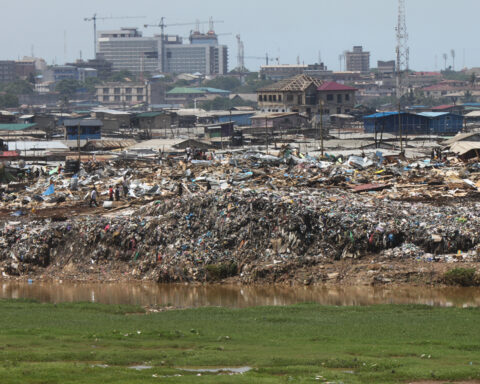This is a republished story from Asaase Radio
Mavis Owusu, 30 years old, sits on her veranda in a small corner of East Legon, fanning herself in the sweltering midday heat. She recalls a time when the neighbourhood was lush with trees that shaded homes and lined the streets.
“When we moved here 15 years ago, it was so beautiful,” she says, gesturing to the row of newly constructed luxury apartments.
“Now it’s all buildings and no trees. The air is hot, and there’s no breeze anymore.”
Mavis, like many long-term residents, has seen her surroundings transformed by relentless urban development. The shade that once cooled her home has been replaced by unrelenting heat radiating off concrete walls.
Her children, now teenagers, complain of persistent coughs, which she attributes to the worsening air quality.
A few kilometres away, Daniel Mensah, a lawyer, walks through the crowded yard of his new residence in Roman Ridge. He moved here last year after living in a gated estate for five years.
The estate, managed by one of Ghana’s leading real estate developers, promised eco-friendly living.
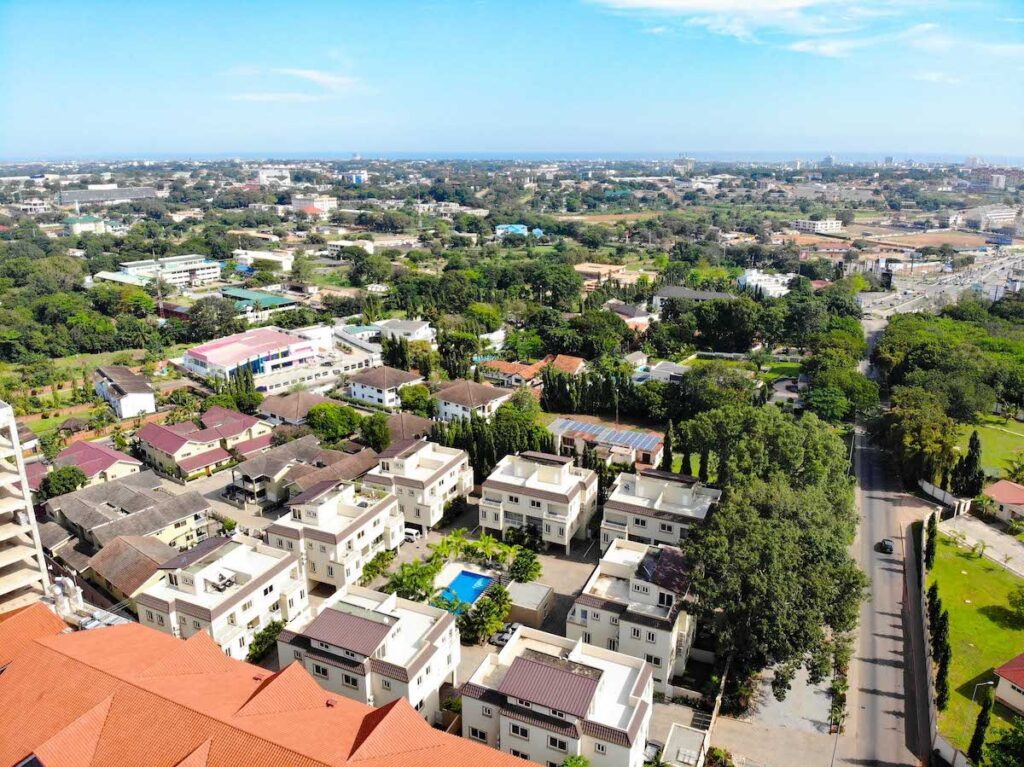
But Daniel quickly realised it was all a facade.
“There were small patches of grass here and there, but it was mostly concrete. The heat was unbearable, and there were no trees to provide shade,” he explains.
His wife suffered from severe migraines, and their young daughter developed asthma symptoms.
“We had to leave. It wasn’t what they promised.”
The loss of green spaces is not just an environmental crisis but a human one, with tangible effects on health, well-being, and community life.
The Illusion of Eco-Friendly Urbanisation

Many real estate companies promise a harmonious blend of luxury and nature. Their advertisements showcase verdant lawns and tree-lined streets, giving the impression of sustainable urban living.
However, site visits to some of these projects in Kumasi and Accra revealed a starkly different reality.
Natural ecosystems have been stripped away, replaced with artificial greenery that is ornamental at best. While the marketing materials speak of lush green spaces, the developments often feature token patches of grass or decorative plants that do little to offset the environmental damage caused by widespread deforestation.
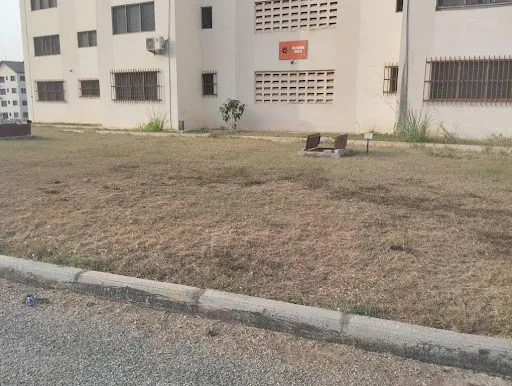
“These so-called green spaces are not real. They don’t cool the area like the original trees did,” said a resident near a new development in Kumasi.
Residents shared stories of how their neighborhoods had transformed from shady, green environments to scorching, paved landscapes with little relief from the sun.
Over the last decade, green spaces in Accra and Kumasi have shrunk by over 30%, replaced by sprawling developments
Regulatory Gaps and Weak Enforcement
Ghana’s Environmental Protection Agency (EPA), Accra Metropolitan Assembly (AMA), and the Land Use and Spatial Planning Authority (LUSPA) are tasked with enforcing existing laws around land use, but their efforts often fall short.
Interviews with urban planners and environmental experts revealed systemic issues, including vague zoning laws, political interference, and inadequate resources for enforcement.
“Developers with the right political connections can bypass regulations with ease,” said an AMA officer who requested anonymity.
Investigations into permit approvals showed several instances where real estate projects were greenlit despite failing to meet green space requirements.
Ghana’s zoning laws, as outlined in the Land Use and Spatial Planning Act, 2016 (Act 925) and the accompanying Land Use and Spatial Planning Regulations, 2019 (L.I. 2384), emphasise sustainable land development and environmental considerations.
While these laws provide a comprehensive framework, they do not specify detailed greenery requirements. Instead, these are typically addressed at the local level through district assemblies and municipal planning authorities.
“The lack of stringent enforcement means developers prioritise profits over environmental sustainability,”
Dr Kwame Nyame, urban planning expert at the University of Ghana
However, LUSPA’s zoning guidelines (L.I. 2384) state:
“To enhance the appearance of a town or city, all new development in a residential zone, commercial zone, and industrial zone will be required to provide adequate tree planting. Along the major road frontage, landscaping should not be less than 2m wide.
This area shall be planted with trees or shrubs requiring low maintenance. Suitable species of plants and trees that could be grown are outlined in the landscaping guidelines.”
Observations of new developments in Accra and Kumasi indicate that most projects fail to comply with these requirements.
According to Samuel Amegayibor, Executive Secretary of the Ghana Real Estate Developers Association (GREDA), some developers flout such measures because buyers often request that more land space be channelled into building the houses.

“The lack of stringent enforcement means developers prioritise profits over environmental sustainability,” said Dr Kwame Nyame, an urban planning expert at the University of Ghana. “We need clearer guidelines and stricter implementation to ensure urban areas remain livable.”
Satellite imagery analysed as part of this investigation paints a stark picture.
Over the last decade, green spaces in Accra and Kumasi have shrunk by over 30%, replaced by sprawling developments. These visual changes align with findings from Environmental Impact Assessments (EIAs) that highlight consistent non-compliance by developers.
The Human and Environmental Toll
The loss of green spaces has far-reaching consequences for both the environment and the people living in Ghana’s cities. Rising temperatures, caused by the heat island effect, are a growing concern.
Urban areas without adequate greenery trap heat, making cities like Accra significantly hotter than surrounding rural regions.
Air quality is another casualty.
Trees and vegetation act as natural air filters, reducing pollutants and improving the health of urban residents. With fewer trees, residents are exposed to higher levels of air pollution, exacerbating respiratory illnesses, especially among children and the elderly.
Many African cities are encountering the same problem. In Lagos, Nigeria, Kumasi, Ghana, and Addis Ababa, Ethiopia, urban greenery covers 3%, 7%, and 1% of the total land area, respectively.
Ghana’s Environmental Protection Agency linked nearly 3,000 deaths in the Greater Accra Metropolitan Area to air pollution in 2015. This could rise to 4,600 deaths by 2030, the EPA has warned.
The depletion of green spaces also increases flood risks.
Accra, already prone to flooding, has seen worsening waterlogging issues as vegetation that once absorbed rainwater has been replaced by impervious concrete surfaces.
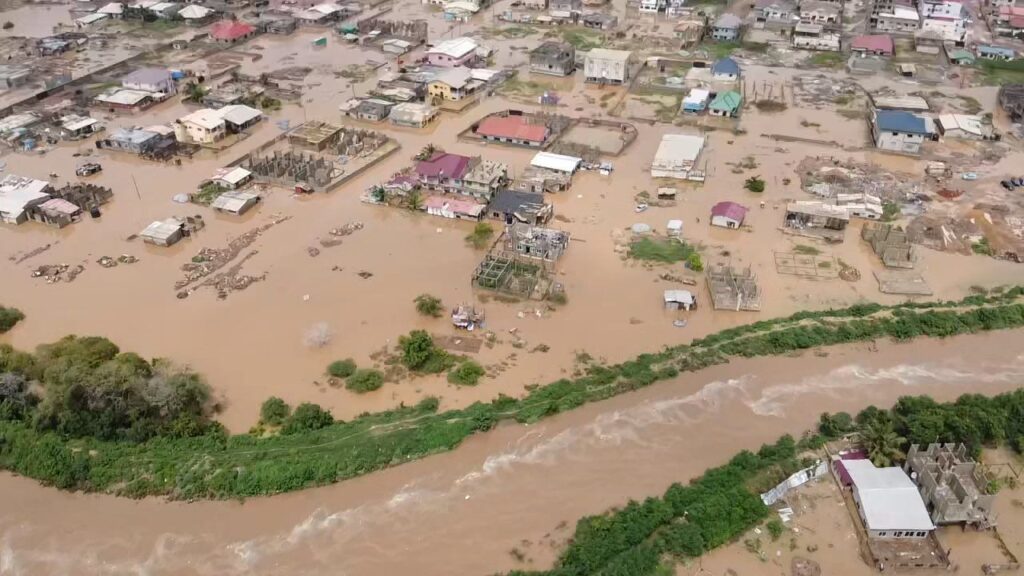
“Flooding has become a regular disaster here. What used to be minor water pooling now turns into knee-deep water within minutes of rain,” lamented a resident of East Legon.
Speaking on the issue, the Executive Secretary of the Ghana Real Estate Developers Association (GREDA), Samuel Amegayibor, highlighted the detrimental effects of inadequate greenery in urban spaces.
“Sometimes, you step into a compound, and you are immediately hit with heat. Many residents don’t understand the technical reasons behind it,” he said.
The absence of greenery is contributing to rising temperatures and health risks in urban areas. “Heat can make you sick,” Amegayibor warned.
“Walking through environments devoid of greenery affects not just your comfort but your overall health.”
“The companies are not doing enough. They have a responsibility to set standards that others can follow.”
Samuel Amegayibor (Executive Secretary of GREDA)
Greenwashing: A Global Practice with Local Consequences
The term “greenwashing” describes practices where companies present themselves as environmentally friendly while engaging in activities that harm the environment.
In Ghana, this has become a hallmark of the real estate sector.
Developers use buzzwords like “eco-friendly” and “sustainable” in marketing campaigns to attract environmentally conscious buyers, but their actions rarely match their claims.
“Greenwashing isn’t just deceptive; it’s dangerous. It creates a false sense of security among consumers and policymakers, delaying real action,” said Clement Abaidoo, an environmental activist with the Africa Centre for Environment and Sustainability (CENS Africa).
International standards, such as those set by the WHO and EU, recommend specific green space quotas for urban areas.
But Ghana’s urban planning policies have yet to adopt these guidelines meaningfully.
Fixing the problem requires a multi-faceted approach. Stronger enforcement of environmental laws is essential, but so is public education.
Many urban residents are unaware of the long-term benefits of green spaces, from cooling effects to improved mental health. Advocacy groups must step up efforts to hold developers and local governments accountable.
International standards offer a roadmap for change.
Cities like Curitiba in Brazil and Singapore have integrated green spaces into urban planning, proving that economic development and environmental sustainability can coexist.
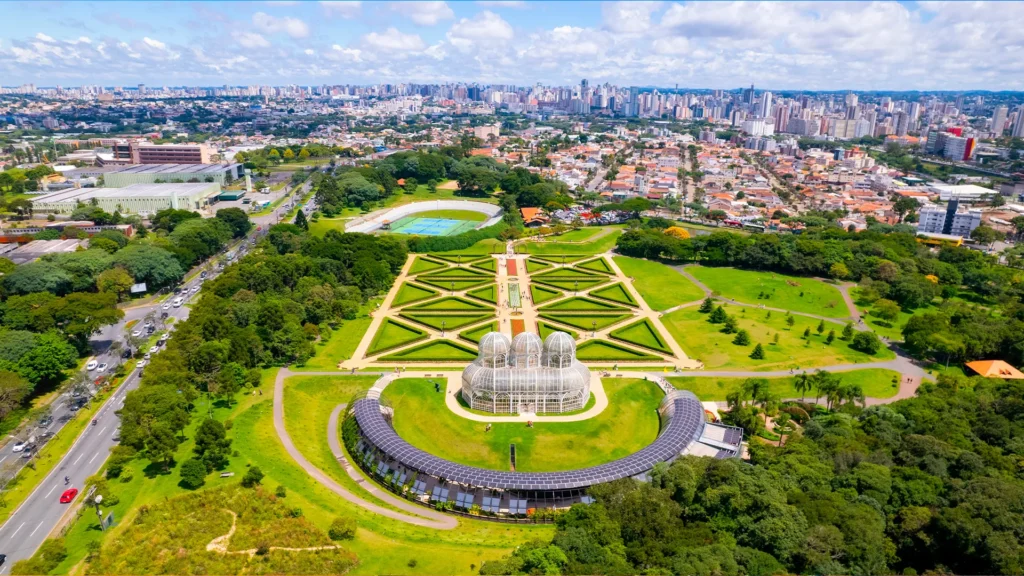
Development Expert William Addo argues, “Ghana can learn from these examples. Green spaces don’t just benefit the environment; they make cities more livable and economically vibrant.”
To address the issue, Mr. Amegayibor (Executive Secretary of GREDA) called for a multi-pronged approach involving education, stricter enforcement of regulations, and a commitment from real estate developers to prioritize greenery in their projects.
“We need to think about the future. Everyone—homeowners, architects, and real estate developers—must play their part in bringing about this change,” he said.
While real estate developers account for only 3-5% of residential housing supply in Ghana, Mr. Amegayibor urged them to lead by example.
“The companies are not doing enough. They have a responsibility to set standards that others can follow.”
This reporting was completed with the support of the Centre for Journalism Innovation and Development as part of the Centre for investigative Journalism’s Open Climate Reporting Initiative.


